For my first Monthly Orchestration Challenge, the entries totaled 60 scores, including my own. Nearly all of these are included in the archive below. It was terrific receiving so many scores for the start of this challenge. The entrants represented a wide array of interests and experience, from near-beginners to professional orchestrators, but every entry showed the marks of care and craft.
The source excerpt was well-suited for orchestral transcription: Etude Variation I, bars 1-8, of Schumann’s Symphonic Etudes. In fact, many of the variations in that work would make great candidates for orchestration, even though they are superbly well-composed exercises for the pianist. Yet this variation posed specific problems, which invited a consensus of orchestrators to solve.
The restatements of the opening motive climb into different registers with each bar: basso profundo, then baritone, then tenor, and finally soprano. To maintain these registers in an arrangement means that a variety of instruments must trade off the motives, rather than one instrument rising seamlessly across the bars – especially as the brusque staccato accompaniment in bars 2-4 might need to be played by the same instruments that introduced the theme in the first bar.
In the second half, Schumann has laid a technical trap for the pianist: a legato melody under descending separated chords in bar 5, requiring finger substitution all the way down from note to note. But the trap for orchestrators lies in bars 6-7. To maintain this register means to rely on the darker fourth strings of violin and viola. The biggest challenge here lies in keeping the center of this passage from becoming too intense compared to its bookending bars.
In my own arrangement, I decided to orchestrate right to the period of Schumann’s height: the late 1830’s. I included the influence of Schumann’s immediate predecessors: Weber, Schubert, and Beethoven; along with his contemporaries Mendelssohn and Berlioz. These composers, along with opera composers and older models, left a strong mark on Schumann’s orchestral style. And yet I brought my own sense of carefully balanced coloration to bear as well. I wanted an arrangement that would evolve naturally from color to color, evoking the symphonic character inherent in the original piano variations.
To take a look, open the top PDF below. There’s an accompanying sound file next to it, if you need an audio guide. In addition, I’ve supplied the original notation file, so Sibelius users may open it and reconfigure the playback to their own sound sets, or even play around with my orchestration.

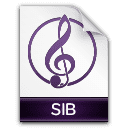

Bar 1 starts with double bass pizzicato introducing the theme, doubled by timpani at the octave. 2nd bassoon picks up the unison doubling on staccato, matching and coloring the pizzicato, and then finishes with a slur as the theme is picked up smoothly by violas and cellos in octaves. The octaves become a unison in bar 2, doubled by clarinet. Meanwhile, double bass pizzicato takes over on accompaniment, doubled by bass trombone, leaving the timpani to state the dotted rhythm. Note that in bar 3, I trade off between oboe and clarinet to double the melody, allowing the oboe to descend no lower than D#. Flute only picks up the briefest little fragment of doubling by the end of the fourth bar, using a part of its register easier to control and blend, and avoiding previous lower notes. As the motive has been rising through the strings, each successive part to give up the melody takes over the lower pizzicato accompaniment, and is doubled by lower wind staccato.
So far so good – a pretty standard way of approaching such a terraced passage. The main challenge so far has been to keep things light and open, despite the seriousness of the music – hence the careful finessing of registers in both strings and winds. Here it’s the tiny little touches that count, carefully tweaking the line so that its energy and color stay varied and not obvious. A stray staccato here, a touch of pizzicato there, and exactly the right point of balance and changeover of color make all the difference.
But now I want to add energy and darkness to the color without getting soupy and arteriosclerotic. My descending melody in bar 5 is doubled violins at the octave with doubled violas and cellos, with first bassoon’s single line filling in the lower line while coloring the upper line with overtones. The punctuating 4-part harmony is one of my favorite tricks: horn trio with a single clarinet on top, for a very clean, controlled tone. In the crucial bars 6 & 7, I keep an extremely light touch on the harmony, with one or two notes in the horns providing a middle voice to the low octave melody; while timpani, bass trombone, and first horn all give a bit of bounce to the dotted pulse. A carefully scored cadence in the upper winds finishes the excerpt, punctuated on the offbeat by pizzicato.
I invite the reader and student of orchestration to score-read and listen to the audio several times, noting the coloristic touches and scoring strategies I list above. Then take a tour through the nearly five dozen scores below. This will represent an awesome boost to your score-reading capabilities – if you’re really absorbing the musical content, then the meaning and sound of each score will become obvious as you look from one to the other, and note both the similarities and differences.
First, the similarities: most orchestrators adopted a similar approach to mine in the first four bars, as it’s the natural thing to do. But note the differences: Which orchestrators double winds and strings, and which feature one or the other? Which bring in brass from the start, or counter-intuitively feature higher winds leading off the entrance of the motive?
Then note the variety of approaches in handling the second half. Some scores dig deep into the bass range with trombones blaring; others fill in the whole orchestral scope with colorful tuttis. Some scores are more than a little out of balance, burying functions under unclear textures. But all are heartfelt efforts, and few of them would need more than a little bit of work to whip into shape.
A few scores just go for it at the end, like Dave Nedwek’s very integrated entry. David Estornell’s thoughtfully crafted score reveals his interest in band arranging, while Graham Plowman’s has a strong character of game and film music. Elegant touches abound, as with the cadential artificial string harmonics in Justin Tokke’s score, alternating between touch-five and touch-four nodes. For massive textures, try Thomas Breeden, Guillermo Buendia, Danny Choi, Stéphane Ferrari, and Michael Armstrong. For the subtle, check out Felix Burghelea, Jaap Cramer, Claudio Panai, and Paul Wendlandt.
Two scores especially stood out in terms of intense reinterpretation. One was Gordon Francis Blaney, Jr.’s awesome nine-page exercise in color, contrast, and motoristic energy. The other was Vili Robert Ollila’s cinematic exaltation of the subject, almost a case study of how any motive may be expanded to epic proportions with the right craft and vigor. Both scores were accompanied by audio files when posted to Facebook, and are very much worth listening to.
There were many other scores with intriguing features that were worth mentioning, and in fact all scores merited full analysis and consultation. This round didn’t allow me sufficient time to really evaluate each score with the attention it deserved. Perhaps time will never allow such a detailed survey – but I’ll try to give more direct feedback on each entry as they’re submitted in following challenges. I can’t wait to see what this group of orchestrators will accomplish with the upcoming challenge!
Alex Kindel
Allen Wu
Andre de Brito
Bartosch McCarthy
Ben Williams
Brian Monroney
Cameron Smith
Christopher Paul
CJ Darnieder
Claudio Panai
Daniel O’Flaherty
Danny Choi
Dave Nedwek
David Estornell
Erik Helm
Felix Burghelea
George Marshall
Gordon Francis Blaney, Jr
Graham Plowman
Guillermo Buendia
Ian Cook
Jaap Cramer
James S Cole
JJay Berthume
Johan Hugosson
Johannes Byrkjeland
Jose Angulo
Joseph Dawson
José Vitores
Justin Tokke
Kaizad Patel
Kevin R Tam
Kevin Riley
Luke Hannington
Matt Hawken
Matthew Ellul
Michael Armstrong
Monty Thibault
Mujaku
Nathan Raught
Natheniel Siu
Nelson Gast
Patrick Schoenbach
Paul Wendlandt
Penny Dodd
Peter Bajetta
Philip McNiel
Robert Fowlie
Rui Lima
Stephane Ferrari
Ted Vaillant
Thomas Breeden
Ulrich Charlé
Vili Robert Ollila
Willy-Els te Boekhorst



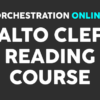
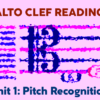
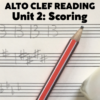
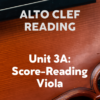
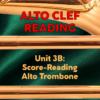



There’s a mistake in my score. That 8vb Base Clef at the beginning of the bassoon part shouldn’t be there. By the way, here’s a mockup of my arrangement: http://picosong.com/PncW/
Hello,
First : thank you so much for everything : web site, youtube channel, facebook page, etc
Just a (perhaps silly) question :
you wrote “‘Both scores were accompanied by audio files when posted to Facebook,”. How can i find those files ?
thank you
ED